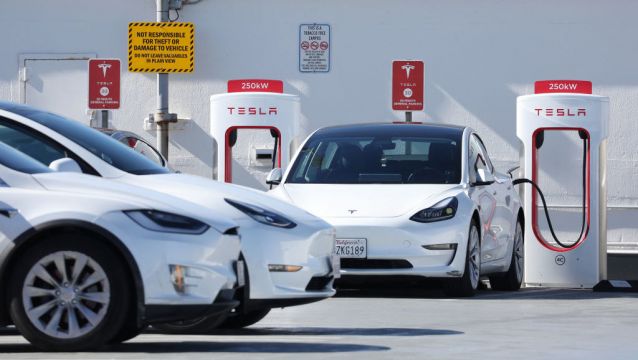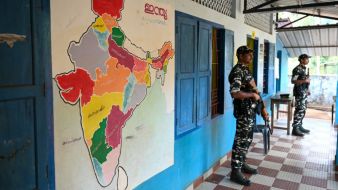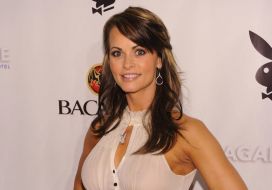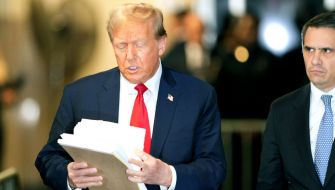In March, Alexandre Ponsin set out on a family road trip from Colorado to California in his newly purchased Tesla, a used 2021 Model 3. He expected to get something close to the electric car’s advertised driving range: 353 miles (568km) on a fully charged battery.
He soon realised he was sometimes getting less than half that much range, particularly in cold weather – such severe underperformance that he was convinced the car had a serious defect.
“We’re looking at the range, and you literally see the number decrease in front of your eyes,” he said of his dashboard range meter. Ponsin contacted Tesla and booked a service appointment in California.
He later received two text messages, telling him that “remote diagnostics” had determined his battery was fine, and then: “We would like to cancel your visit.”
Diversion Team
What Ponsin didn’t know was that Tesla employees had been instructed to thwart any customers complaining about poor driving range from bringing their vehicles in for service. Last summer, the company quietly created a “Diversion Team” in Las Vegas to cancel as many range-related appointments as possible.
The electric carmaker deployed the team because its service centres were inundated with appointments from owners who had expected better performance based on the company’s advertised estimates and the projections displayed by the in-dash range meters of the cars themselves, according to several people familiar with the matter.
Inside the Nevada team’s office, some employees celebrated cancelling service appointments by putting their phones on mute and striking a metal xylophone, triggering applause from coworkers who sometimes stood on desks. The team often closed hundreds of cases a week and staffers were tracked on their average number of diverted appointments per day.
Managers told the employees that they were saving Tesla about $1,000 (€897) for every cancelled appointment, the people said. Another goal was to ease the pressure on service centres, some of which had long waits for appointments.
In most cases, the complaining customers’ cars likely did not need repair, according to the people familiar with the matter.
Rather, Tesla created the groundswell of complaints another way – by hyping the range of its futuristic electric vehicles, or EVs, raising consumer expectations beyond what the cars can deliver. Teslas often fail to achieve their advertised range estimates and the projections provided by the cars’ own equipment, according to Reuters interviews with three automotive experts who have tested or studied the company’s vehicles.
Neither Tesla nor chief executive Elon Musk responded to detailed questions from Reuters for this story.
Range anxiety
Tesla years ago began exaggerating its vehicles’ potential driving distance. The company decided about a decade ago, for marketing purposes, to write algorithms for its range meter that would show drivers “rosy” projections for the distance it could travel on a full battery, according to a person familiar with an early design of the software for its in-dash readouts.
Then, when the battery fell below 50 per cent of its maximum charge, the algorithm would show drivers more realistic projections for their remaining driving range, this person said. To prevent drivers from getting stranded as their predicted range started declining more quickly, Teslas were designed with a “safety buffer,” allowing about 15 miles (24 km) of additional range even after the dash readout showed an empty battery, the source said.
The directive to present the optimistic range estimates came from Tesla Chief Executive Elon Musk, this person said.
“Elon wanted to show good range numbers when fully charged,” the person said.
Tesla’s intentional inflation of in-dash range-meter projections and the creation of its range-complaints diversion team have not been previously reported.
Driving range is among the most important factors in consumer decisions on which electric car to buy, or whether to buy one at all. So-called range anxiety – the fear of running out of power before reaching a charger – has been a primary obstacle to boosting electric-vehicle sales.
At the time Tesla programmed in the rosy range projections, it was selling only two models: the two-door Roadster, its first vehicle, which was later discontinued; and the Model S, a luxury sport saloon launched in 2012. It now sells four models: two cars, the 3 and S; and two crossover SUVs, the X and Y. Tesla plans the return of the roadster, along with a “cybertruck” pickup.
Reuters could not determine whether Tesla still uses algorithms that boost in-dash range estimates. But automotive testers and regulators continue to flag the company for exaggerating the distance its vehicles can travel before their batteries run out.
Tesla was fined earlier this year by South Korean regulators who found the cars delivered as little as half their advertised range in cold weather. Another recent study found that three Tesla models averaged 26 per cent below their advertised ranges.
The US Environmental Protection Agency (EPA) has required Tesla since the 2020 model year to reduce the range estimates the automaker wanted to advertise for six of its vehicles by an average of 3 per cent. The EPA told Reuters, however, that it expects some variation between the results of separate tests conducted by automakers and the agency.
Data collected in 2022 and 2023 from more than 8,000 Teslas by Recurrent, a Seattle-based EV analytics company, showed that the cars’ dashboard range meters didn’t change their estimates to reflect hot or cold outside temperatures, which can greatly reduce range.
Recurrent found that Tesla’s four models almost always calculated that they could travel more than 90 per cent of their advertised EPA range estimates regardless of external temperatures.
Scott Case, Recurrent’s chief executive, said Tesla’s range meters also ignore many other conditions affecting driving distance.

Weather impact
Electric cars can lose driving range for a lot of the same reasons as combustion engine cars — but to a greater degree. The cold is a particular drag on EVs, slowing the chemical and physical reactions inside their batteries and requiring a heating system to protect them. Other drains on the battery include hilly terrain, headwinds, a driver’s lead foot and running the heating or air-conditioning inside the cabin.
Tesla discusses the general effect of such conditions in a “Range Tips” section of its website. The automaker also recently updated its vehicle software to provide a breakdown of battery consumption during recent trips with suggestions on how range might have been improved.
Tesla vehicles provide range estimates in two ways: One through a dashboard meter of current range that’s always on, and a second projection through its navigation system, which works when a driver inputs a specific destination. The navigation system’s range estimate, Case said, does account for a wider set of conditions, including temperature. While those estimates are “more realistic,” they still tend to overstate the distance the car can travel before it needs to be recharged, he said.
Recurrent tested other automakers’ in-dash range meters – including the Ford Mustang Mach-E and the Hyundai Kona – and found them to be more accurate. The Kona’s range meter generally underestimated the distance the car could travel, the tests showed. Recurrent conducted the study with the help of a National Science Foundation grant.
Tesla, Case said, has consistently designed the range meters in its cars to deliver aggressive rather than conservative estimates: “That’s where Tesla has taken a different path from most other automakers.”
Failed tests
Tesla isn’t the only automaker with cars that don’t regularly achieve their advertised ranges.
One of the experts, Gregory Pannone, co-authored a study of 21 different brands of electric vehicles, published in April by SAE International, an engineering organisation. The research found that, on average, the cars fell short of their advertised ranges by 12.5 per cent in motorway driving.
The study did not name the brands tested, but Pannone told Reuters that three Tesla models posted the worst performance, falling short of their advertised ranges by an average of 26 per cent.
The EV pioneer pushes the limits of government testing regulations that govern the claims automakers put on window stickers, the three automotive experts said.
In the US, like their petrol or diesel-powered counterparts, new electric vehicles are required by federal law to display a label with fuel-efficiency information. In the case of EVs, this is stated in miles-per-gallon equivalent (MPGe), allowing consumers to compare them to petrol or diesel vehicles. The labels also include estimates of total range: how far an EV can travel on a full charge, in combined city and highway driving.
Formula
EV makers have a choice in how to calculate a model’s range. They can use a standard EPA formula that converts fuel-economy results from city and highway driving tests to calculate a total range figure. Or automakers can conduct additional tests to come up with their own range estimate. The only reason to conduct more tests is to generate a more favourable estimate, said Pannone, a retired auto-industry veteran.
Tesla conducts additional range tests on all of its models. By contrast, many other automakers, including Ford, Mercedes and Porsche, continue to rely on the EPA’s formula to calculate potential range, according to agency data for 2023 models. That generally produces more conservative estimates, Pannone said.
Mercedes-Benz said it uses the EPA’s formula because it believes it provides a more accurate estimate. “We follow a certification strategy that reflects the real-world driving behaviour of our customers in the best possible way,” the German carmaker said in a statement.
Ford and Porsche didn’t respond to requests for comment.
Whatever an automaker decides, the EPA must approve the window-sticker numbers. The agency told Reuters it conducts its own tests on 15 per cent to 20 per cent of new electric vehicles each year as part of an audit program and has tested six Tesla models since the 2020 model year.
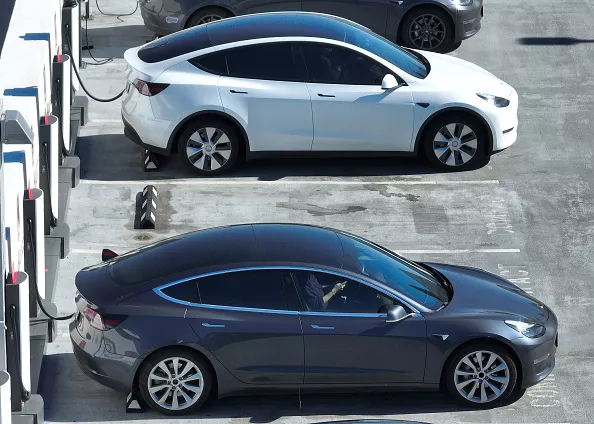
EPA data obtained by Reuters through the Freedom of Information Act showed that the audits resulted in Tesla being required to lower all the cars’ estimated ranges by an average of 3 per cent. The projected range for one vehicle, the 2021 Model Y Long Range AWD (all-wheel drive), dropped by 5.15 per cent. The EPA said all the changes to Tesla’s range estimates were made before the company used the figures on window stickers.
The EPA said it has seen “everything” in its audits of EV manufacturers’ range testing, including low and high estimates from other automakers. “That is what we expect when we have new manufacturers and new technologies entering the market and why EPA prioritises” auditing them, the agency said.
The EPA cautioned that individuals’ actual experience with vehicle efficiency might differ from the estimates the agency approves. Independent automotive testers commonly examine the EPA-approved fuel-efficiency or driving range claims against their own experience in structured tests or real-world driving. Often, they get different results, as in the case of Tesla vehicles.
Pannone called Tesla “the most aggressive” electric-vehicle manufacturer when it comes to range calculations.
“I’m not suggesting they’re cheating,” Pannone said of Tesla. “What they’re doing, at least minimally, is leveraging the current procedures more than the other manufacturers.”
Test results
Jonathan Elfalan, vehicle testing director for the automotive website Edmunds.com, reached a similar conclusion to Pannone after an extensive examination of vehicles from Tesla and other major automakers, including Ford, General Motors, Hyundai and Porsche.
All five Tesla models tested by Edmunds failed to achieve their advertised range, the website reported in February 2021. All but one of 10 other models from other manufacturers exceeded their advertised range.
Tesla complained to Edmunds that the test failed to account for the safety buffer programmed into Tesla’s in-dash range meters. So Edmunds did further testing, this time running the vehicles, as Tesla requested, past the point where their range meters indicated the batteries had run out.
Only two of six Teslas tested matched their advertised range, Edmunds reported in March 2021. The tests found no fixed safety buffer.
Edmunds has continued to test electric vehicles, using its own standard method, to see if they meet their advertised range estimates. As of July, no Tesla vehicle had, Elfalan said.
“They've gotten really good at exploiting the rule book and maximising certain points to work in their favour involving EPA tests,” Elfalan told Reuters. The practice can “misrepresent what their customers will experience with their vehicles.”

South Korean regulators earlier this year fined Tesla about $2.1 million for falsely advertised driving ranges on its local website between August 2019 and December 2022. The Korea Fair Trade Commission (KFTC) found that Tesla failed to tell customers that cold weather can drastically reduce its cars’ range. It cited tests by the country’s environment ministry that showed Tesla cars lost up to 50.5 per cent of the company’s claimed ranges in cold weather.
The KFTC also flagged certain statements on Tesla’s website, including one that claimed about a particular model: “You can drive 528 km or longer on a single charge.” Regulators required Tesla to remove the “or longer” phrase.
Korean regulators required Tesla to publicly admit it had misled consumers. Musk and two local executives did so in a June 19th statement, acknowledging “false/exaggerated advertising.”
Service appointments
By last year, sales of Tesla’s electric vehicles were surging. The company delivered about 1.3 million cars in 2022, nearly 13 times more than five years before.
As sales grew, so did demand for service appointments. The wait for an available booking was sometimes a month, according to one of the sources familiar with the diversion team’s operations.
Tesla instructs owners to book appointments through a phone app. The company found that many problems could be handled by its “virtual” service teams, who can remotely diagnose and fix various issues.
Tesla supervisors told some virtual team members to steer customers away from bringing their cars into service whenever possible. One current Tesla “Virtual Service Advisor” described part of his job in his LinkedIn profile: “Divert customers who do not require in person service.”
Such advisors handled a variety of issues, including range complaints. But last summer, Tesla created the Las Vegas “Diversion Team” to handle only range cases, according to the people familiar with the matter.
Advisers would normally run remote diagnostics on customers’ cars and try to call them, the people said. They were trained to tell customers that the EPA-approved range estimates were just a prediction, not an actual measurement, and that batteries degrade over time, which can reduce range. Advisors would offer tips on extending range by changing driving habits.
If the remote diagnostics found anything else wrong with the vehicle that was not related to driving range, advisors were instructed not to tell the customer, one of the sources said. Managers told them to close the cases.

Tesla also updated its phone app so that any customer who complained about range could no longer book service appointments, one of the sources said. Instead, they could request that someone from Tesla contact them. It often took several days before owners were contacted because of the large backlog of range complaints, the source said.
The update routed all US range complaints to the Nevada diversion team, which started in Las Vegas and later moved to the nearby suburb of Henderson. The team was soon fielding up to 2,000 cases a week, which sometimes included multiple complaints from customers frustrated they couldn't book a service appointment, one of the people said.
The team was expected to close about 750 cases a week. To accomplish that, office supervisors told advisers to call a customer once and, if there was no answer, to close the case as unresponsive, the source said. When customers did respond, advisers were told to try to complete the call in no more than five minutes.
In late 2022, managers aiming to quickly close cases told advisors to stop running remote diagnostic tests on the vehicles of owners who had reported range problems, according to one of the people familiar with the diversion team’s operations.
“Thousands of customers were told there is nothing wrong with their car” by advisors who had never run diagnostics, the person said.
Reuters could not establish how long the practice continued. Tesla recently stopped using its diversion team in Nevada to handle range-related complaints, according to the person familiar with the matter. Virtual service advisors in an office in Utah are now handling range cases, the person said. Reuters could not determine why the change was made.
Back on the road
By the time Alexandre Ponsin reached California on his March road trip, he had stopped to charge his Model 3’s battery about a dozen times.
Concerned that something was seriously wrong with the car, he had called and texted with several Tesla representatives. One of them booked the first available appointment in Santa Clara – about two weeks away – but advised him to show up at a Tesla service centre as soon as he arrived in California.
Ponsin soon received a text saying that remote diagnostics had shown his battery “is in good health.”
“We would like to cancel your visit for now if you have no other concerns,” the text read.
“Of course I still have concerns,” Ponsin shot back. “I have 150 miles of range on a full charge!”
The next day, he received another text message asking him to cancel the appointment. “I am sorry, but no I do not want to close the service appointment as I do not feel my concerns have been addressed,” he replied.
Undeterred, Ponsin brought his car to the Santa Clara service centre without an appointment. A technician there told him the car was fine. “It lasted 10 minutes,” Ponsin said, “and they didn’t even look at the car physically.”
After doing more research into range estimates, he said he ultimately concluded there is nothing wrong with his car. The problem, he said, was that Tesla is overstating its performance. He believes Tesla “should be a lot more explicit about the variation in the range,” especially in very cold weather.
“I do love my Tesla,” the engineer said. “But I have just tempered my expectation of what it can do in certain conditions.” - Reuters
